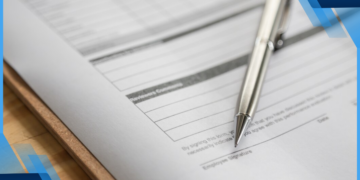Cracking the ATO Code: Your Essential Guide to Navigating Australian Taxes

What Is the Australian Taxation Office (ATO) and What Does It Do?
The Australian Taxation Office (ATO) plays a crucial role in the lives of all Australians, whether you’re an individual taxpayer, a small business owner, or a large corporation. The ATO is responsible for collecting revenue for the Australian government, which funds essential services like healthcare, education, and infrastructure.
Beyond just tax collection, the ATO also oversees the superannuation system, enforces tax laws, and provides guidance to help Australians meet their tax obligations. Understanding what the ATO does is the first step in navigating your tax responsibilities and making sure you’re compliant with Australian tax laws.
For more information about the ATO’s role, you can visit the Australian Taxation Office’s official website.
How to Lodge Your Tax Return with the ATO
Lodging your tax return is one of the most important interactions you’ll have with the ATO each year. Fortunately, the process is straightforward, especially with the various options available.
You can lodge your tax return online using MyGov, through a registered tax agent, or by completing a paper return. For most Australians, lodging online through MyGov is the quickest and easiest method.
The ATO’s online system automatically fills in much of your information, such as income and interest, based on data provided by your employer and financial institutions. However, it’s important to review this information carefully and include any additional income or deductions before submitting your return.
For step-by-step guidance on lodging your tax return, visit the ATO’s guide to lodging online.
Do You Need to Lodge a Tax Return?
Not everyone is required to lodge a tax return, but it’s important to know if you fall into the category of those who do. Generally, if you earned more than the tax-free threshold, received any taxable income (including pensions and government payments), or had tax withheld from your earnings, you will need to lodge a return.
However, even if you didn’t earn much, you might still need to lodge if you had a part-time job or received certain types of government benefits. The ATO provides a handy tool on their website that helps you determine whether you need to lodge a tax return based on your circumstances.
What Are the ATO’s Tax Deadlines?
Meeting tax deadlines is crucial to avoid penalties and ensure you stay on the right side of the ATO. The main deadline for lodging your tax return is 31 October each year if you’re doing it yourself.
However, if you use a registered tax agent, you may be eligible for an extension until 15 May of the following year. It’s essential to lodge on time or request an extension if you’re unable to meet the deadline.
The ATO also sets deadlines for other tax-related obligations, such as Business Activity Statements (BAS) for businesses and Pay As You Go (PAYG) installments.
What Happens If You Don’t Lodge Your Tax Return on Time?
Failing to lodge your tax return by the due date can result in penalties, and the longer you delay, the worse the consequences can be. Initially, the ATO may impose a Failure to Lodge (FTL) penalty, which increases the longer your return remains outstanding.
The penalty amount is calculated based on the number of days overdue and your level of income. Additionally, if you owe tax, interest may accrue on the unpaid amount.
It’s always best to lodge on time, even if you can’t pay your tax bill in full, as you can then work out a payment plan with the ATO.
How to Use MyGov to Access ATO Services
MyGov is a central platform that allows Australians to access various government services, including those offered by the ATO. Through MyGov, you can link your ATO account and manage your tax affairs online.
This includes lodging your tax return, checking your tax history, managing your superannuation, and updating your details. MyGov also allows you to view and pay any outstanding tax debts and keep track of your financial interactions with the ATO.
Setting up a MyGov account is simple, and once linked to the ATO, it provides a streamlined way to manage your tax obligations.
What Deductions Can You Claim on Your Tax Return?
Claiming deductions on your tax return can significantly reduce your taxable income, meaning you’ll pay less tax or get a larger refund. Some common deductions include work-related expenses, such as uniforms, tools, and professional development courses.
You can also claim deductions for donations to registered charities, certain medical expenses, and the cost of managing your tax affairs (like tax agent fees).
It’s essential to keep records of all your expenses to substantiate your claims if the ATO asks for proof. Remember, your claims must be related to earning your income and you can’t claim expenses for which you’ve been reimbursed.
How to Pay Your Tax Debt to the ATO
If you owe money to the ATO, it’s important to pay it as soon as possible to avoid interest charges and penalties. The ATO offers several payment options, including BPAY, credit card, and direct debit.
If you’re unable to pay the full amount by the due date, you can set up a payment plan to pay off your debt in installments. It’s crucial to contact the ATO as soon as you realize you can’t pay on time to avoid additional charges.
The ATO is generally willing to work with taxpayers to find a solution, especially if you’re experiencing financial hardship.
What Is a Tax File Number (TFN) and How Do You Get One?
A Tax File Number (TFN) is a unique identifier issued by the ATO to individuals and businesses. It’s essential for managing your tax and superannuation affairs.
Without a TFN, you may pay more tax than necessary, and it may be difficult to lodge your tax return. To get a TFN, you can apply online if you’re an Australian resident, or through Australia Post if you’re a foreign resident or a temporary visitor.
It’s important to keep your TFN secure, as it’s used in many financial transactions.
What Is PAYG (Pay As You Go) and How Does It Work?
Pay As You Go (PAYG) is a system for making regular payments towards your expected annual tax liability. There are two main components of PAYG: withholding and installments.
PAYG withholding is the tax your employer deducts from your wages and sends to the ATO on your behalf. PAYG installments are prepayments you make if you earn income outside of your salary, such as from investments or business activities.
These prepayments are offset against your tax bill when you lodge your return. Understanding PAYG can help you avoid a large tax bill at the end of the year.
How to Keep Track of Your Tax Records for the ATO
Keeping accurate records is crucial for meeting your tax obligations and claiming deductions. The ATO requires you to keep records of all your income, expenses, and tax-related transactions for at least five years.
This includes receipts, invoices, bank statements, and any other documentation that supports your tax return. Using digital tools, such as apps or online storage, can make record-keeping easier and ensure your documents are accessible when needed.
Proper record-keeping not only helps you avoid issues with the ATO but also makes it easier to complete your tax return each year.
Related content

First Home Buyer Australia: Grants and Loan Tips You Need to Know

Understand Your Money Mindset: Make Smarter Choices with Behavioural Finance

How BNPL Is Changing Everyday Aussie Spending

Tax File Number explained: what it is, why it matters, and how to apply and protect yours

Tips for Improving Your Creditworthiness
